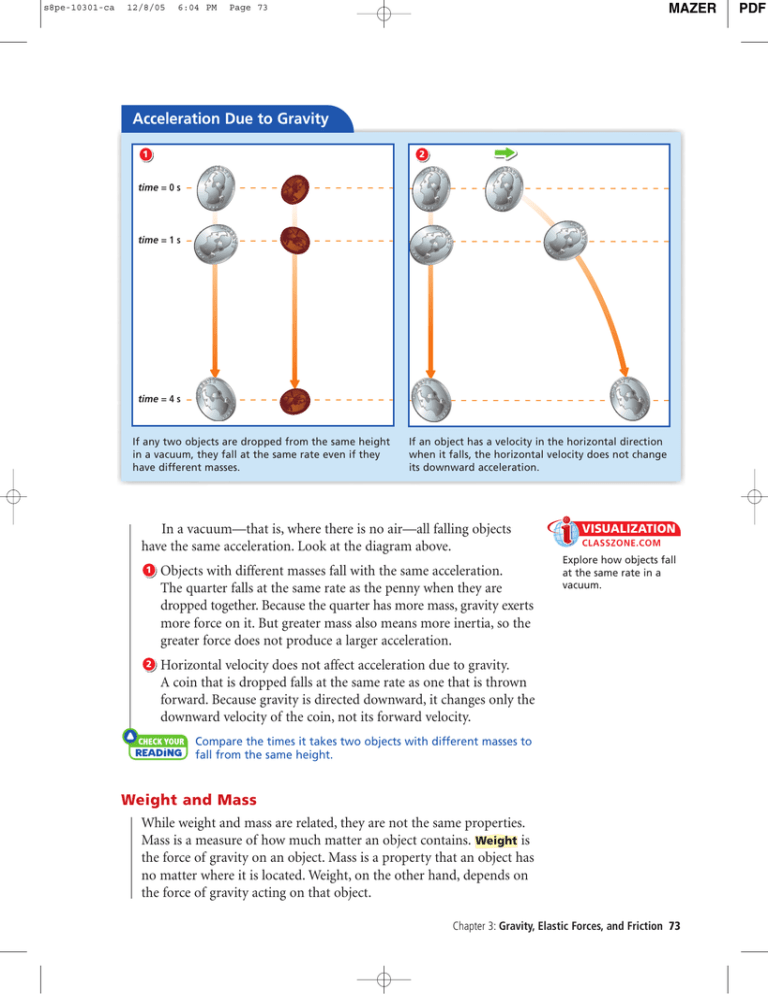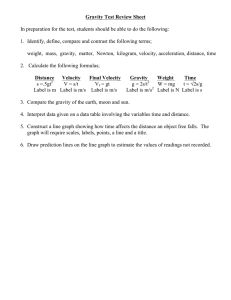Acceleration Due to Gravity
advertisement

s8pe-10301-ca 12/8/05 6:04 PM MAZER Page 73 Acceleration Due to Gravity 1 2 time = 0 s time = 1 s time = 4 s If any two objects are dropped from the same height in a vacuum, they fall at the same rate even if they have different masses. If an object has a velocity in the horizontal direction when it falls, the horizontal velocity does not change its downward acceleration. In a vacuum—that is, where there is no air—all falling objects have the same acceleration. Look at the diagram above. 1 Objects with different masses fall with the same acceleration. The quarter falls at the same rate as the penny when they are dropped together. Because the quarter has more mass, gravity exerts more force on it. But greater mass also means more inertia, so the greater force does not produce a larger acceleration. 2 Horizontal velocity does not affect acceleration due to gravity. A coin that is dropped falls at the same rate as one that is thrown forward. Because gravity is directed downward, it changes only the downward velocity of the coin, not its forward velocity. check your reading VISUALIZATION CLASSZONE.COM Explore how objects fall at the same rate in a vacuum. Compare the times it takes two objects with different masses to fall from the same height. Weight and Mass While weight and mass are related, they are not the same properties. Mass is a measure of how much matter an object contains. Weight is the force of gravity on an object. Mass is a property that an object has no matter where it is located. Weight, on the other hand, depends on the force of gravity acting on that object. Chapter 3: Gravity, Elastic Forces, and Friction 73 PDF


